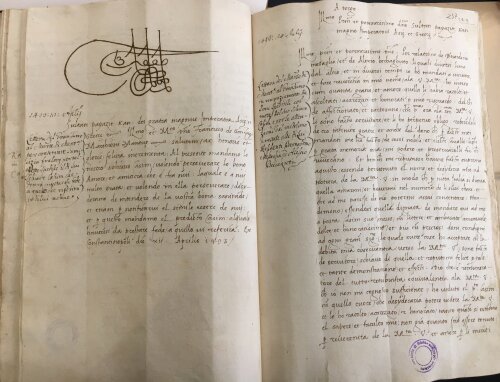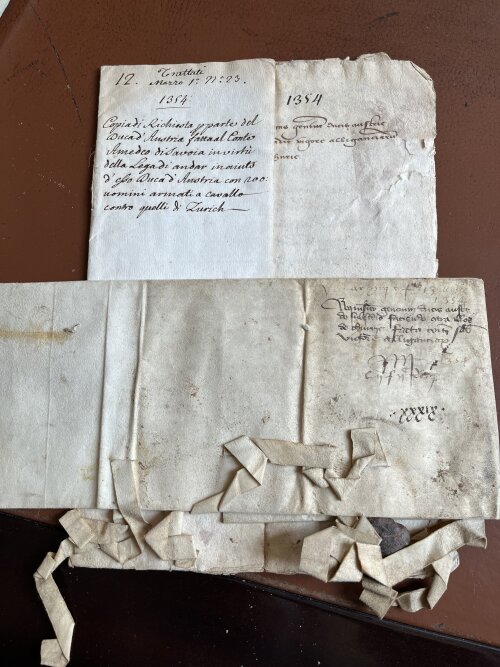Isabella Lazzarini
When Frédéric Bauden and Malika Dekkiche, a few years ago now, wrote to me asking me if I was interested in participating with them and Roser Salicrú I Lluch to a project on the interconnected story of diplomatic, political, and economic contacts between the Italian polities, the Crown of Aragon and the Mamluk Sultanate, I did not hesitate for a moment. Not only the company was good, but the idea looked great since the beginning. At the time, I was working on Italian diplomacy in the early Renaissance, and I was starting to feel uncomfortable with the idea that the whole thing could be limited to inter-peninsular or even inter-European contacts. The late medieval Italian system was, of course, a very peculiar one: made by many polities and powers involved in a tight network of communication and conflict in which everyone spoke and most of all wrote in the same language, it could be seen as a self-sufficient one. Moreover, also thanks to the particularly rich landscape of its sources, Italy was traditionally linked to the nineteenth- and twentieth-century idea of the late medieval emergence of permanent embassies and formal ambassadors: the Venetians, the Milanese, the Florentines, the Genoese, both merchants and politicians, and the extremely rich records (from the diplomatic correspondence to the final relations) that are preserved in the Italian archives all were considered the building blocks of the so-called ‘birth of modern diplomacy’.
But of course, Italy was not a self-sufficient system, and we are no longer talking about the origin of a ‘modern diplomacy’ that looks increasingly unable to explain the complexity of late medieval (or even early modern) diplomacy. On one hand, since the early Middle Ages, the Italian powers were open – willingly or not – to foreign influences, both peaceful and agressive: from the Lombards to the Byzantines, from the Carolingians to the Normans, from the Swabian to the Angevins and the Aragonese, the French and the Spanish, Italy has always been traversed and changed by ‘other’ cultures (as most of Europe, actually…). The Italian peninsula was also, as it still is, a country with hundreds or even thousands of miles of coastlines, projected out into the Mediterranean, and deeply linked to its cultures since the antiquity. On the other, my own research, together with many others’, was telling me that diplomacy was a much more flexible and complex practice than the simple model of a ‘modern diplomacy’ born during the Renaissance from a chaotic Middle Ages let us suppose, and that there were no closed systems in it. The appeal of looking beyond my own comfort zone was getting increasingly strong.

Source: Archivio di Stato di Mantova, Archivio Gonzaga, b. 86.17
I am a political scholar and I specialised on the Italian system of powers: the structure and political agency of the different polities, their cultural and political languages and ruling practices, their social features have always been my research field since my University years at the Scuola Normale in Pisa, and then in Milan. Some bizarre life choices (such as marrying a physicist who took me first to Switzerland, then to Scotland, with several spells in France) gave me the opportunity of meeting many different university environments and many lovely friends in the meanwhile. Therefore, broadening my experience has become a defining feature of my intellectual journey; and the idea of getting on board of the DiplomatiCon project was too good to be abandoned.
In DiplomatiCon, my contribution is to provide a scholarly background to the research of the PhDs working on Italy from many angles (Evelina del Mercato and Gianluca Ratti in Antwerp and Michele Argentini in Liège) and to work and learn from all the others: the Mamluk and Catalan specialists among us (Frédéric Bauden, Malika Dekkiche, Roser Salicrú, and the PhDs, Marta Manso Rubio, Queralt Penedès Fradera and Giacomo Mastrogregori) and those who not only are expert of medieval Mediterranean history but also know how to put it into a sophisticated system of Social and Spatial Networks analysis through the DiplomatiCon Database (our colleague Iason Jongepier and our postdocs, Margo Buelens-Terryn, Davor Salihovic, and Bogdan Smarandache). As for myself, I’m starting to connect my personal research with all the new information that comes from the archival systematic survey conducted by the PhDs students and thinking in a new way about information gathering and informal contacts in the context of a pioneering diplomacy such as the one with the Mamluk Sultanate. The interconnectedness of the Mediterranean political and economic society starts to emerge in a way that was, at least for me, only imaginable: now it becomes real.
One more thing: in this adventure, I’m being exposed to the intricate and fascinating world of the Digital Humanities. This is something I’m definitely not familiar with, and it is not easy. However, the construction of a multilayered database (thanks to an extremely interesting dialogue with Laurent Simon) and its use as producer of Social Network Analysis and Spatial Network analysis have been challenging and illuminating at the same time. I’m on a learning path, and I have great expectations about the final results of this journey.

Source: Archivio di Stato di Torino, Trattati diversi, mazzo 1